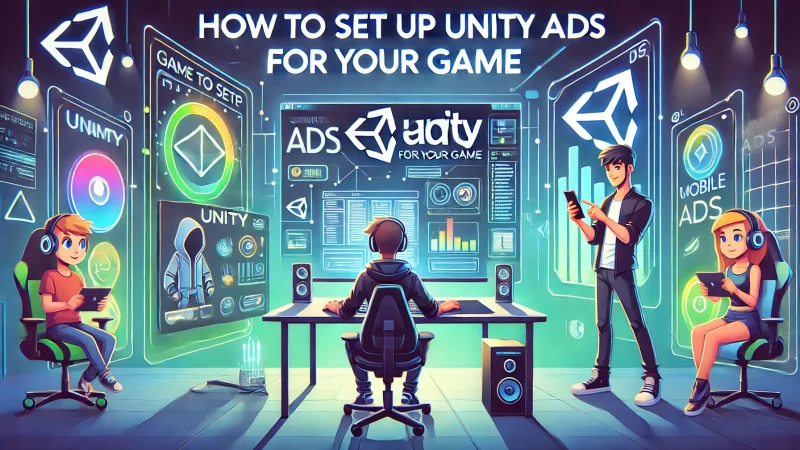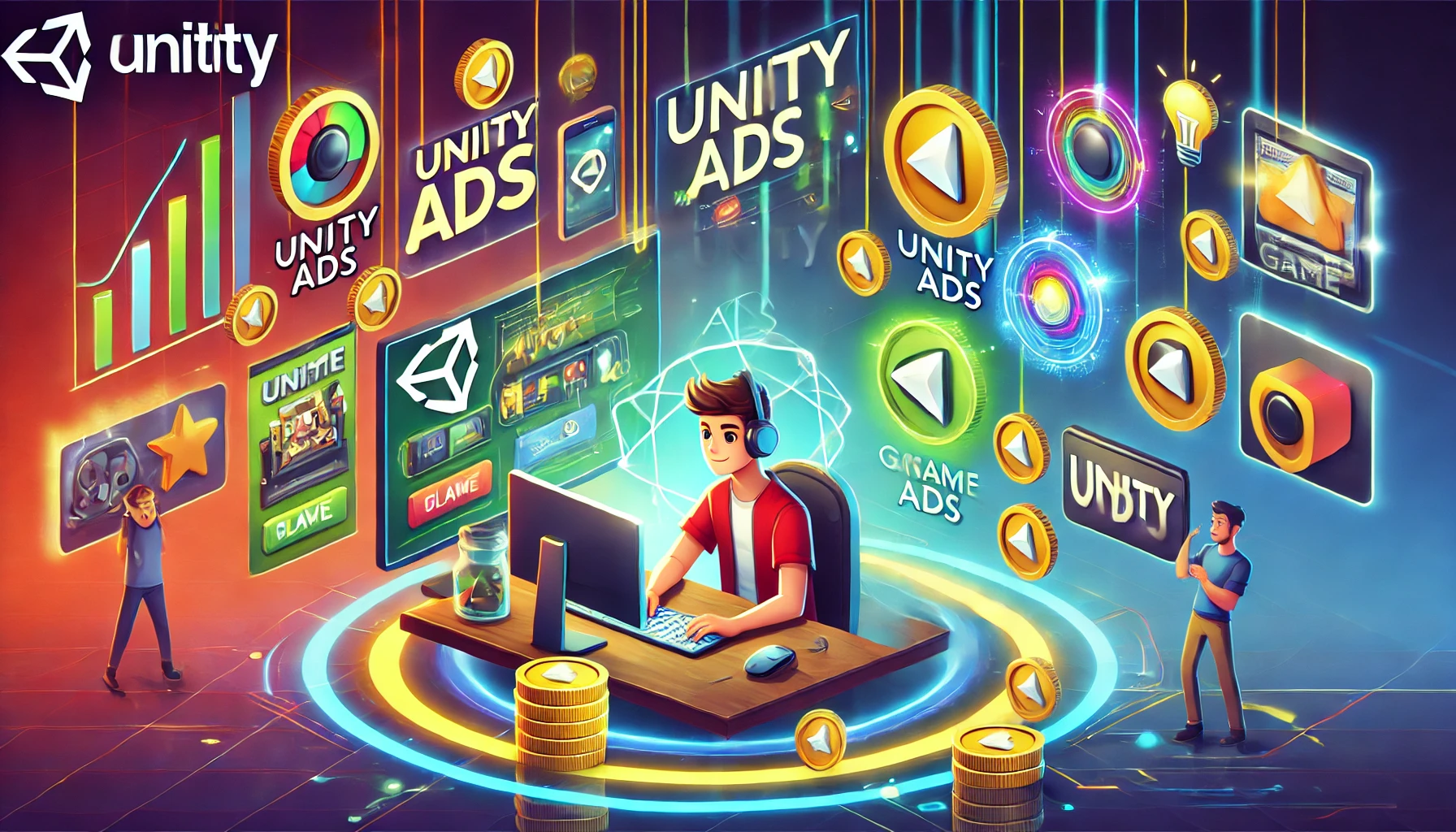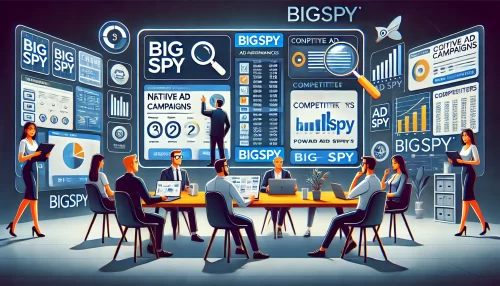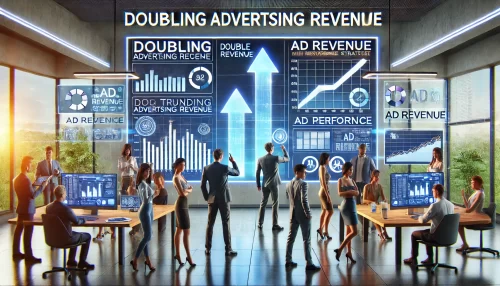Table of Contents
Are you looking for a reliable way to monetize your games without compromising user experience? Wondering how Unity Ads can transform your mobile game’s revenue strategy? If you’re a game developer searching for the perfect monetization solution, you’re in the right place.
In this article, we’ll explore everything you need to know about Unity—from its features and benefits to practical strategies for maximizing your earnings. Whether you’re new to game monetization or looking to improve your current approach, this guide will give you actionable insights to get started. Let’s dive in!
Unity Ads Overview: Why It’s a Game-Changer
Unity Ads is a leading game monetization platform designed to help developers generate revenue while keeping their players engaged. By integrating Unity Ads, developers can seamlessly balance monetization and user experience, making it a game-changer for mobile gaming.
What Are Unity Ads and How Do They Work?
Unity Ads is a monetization platform tailored for game developers, enabling them to display various ad formats like rewarded, interstitial, and banner ads within their games. It’s built to integrate directly into Unity, making the process user-friendly for developers.
For instance, rewarded ads allow players to watch an ad in exchange for in-game rewards, creating a win-win scenario. The platform also uses advanced targeting to ensure ads are relevant to the audience, enhancing engagement and click-through rates.
Unity Ads functions by analyzing user behavior, identifying patterns, and presenting ads that align with player preferences. This data-driven approach ensures the ads resonate with users, boosting their effectiveness while avoiding intrusive experiences.
Unlike traditional ad platforms, Unity Ads goes a step further by offering developers tools to track performance, test placements, and optimize ad delivery. This holistic framework helps developers fine-tune their strategies and maximize revenue.
Key Features That Make Unity Ads Stand Out
Unity Ads stands out due to its robust set of features tailored to game developers. One notable feature is its seamless integration with Unity’s game engine, allowing developers to set up ads with minimal effort.
The platform also supports multiple ad formats, including:
- Rewarded Ads: Encourage players to interact with ads voluntarily.
- Interstitial Ads: Full-screen ads that appear at natural breaks in gameplay.
- Banner Ads: Static ads placed in non-intrusive areas of the screen.
Additionally, Unity Ads provides comprehensive analytics, enabling developers to monitor metrics like eCPM, fill rates, and user engagement. With this data, developers can refine their monetization strategies and make informed decisions.
An example of this is how some developers have used rewarded ads to increase player engagement by offering extra lives or bonus coins. By tailoring these rewards to user behavior, developers create a more engaging ad experience that boosts revenue.
Why Unity Ads Is Perfect for Mobile Game Developers
Unity Ads is specifically designed with mobile game developers in mind. Its focus on non-intrusive ad formats ensures players stay engaged while developers monetize their games effectively.
Mobile gaming relies heavily on user retention, and Unity Ads addresses this by integrating ads that enhance the player experience. For instance, offering a reward for watching an ad keeps players engaged and reduces churn.
Unity Ads also supports cross-platform capabilities, meaning developers can reach users on both iOS and Android without additional hassle. This flexibility makes it a powerful tool for scaling mobile games.
Moreover, Unity Ads offers developers the ability to monetize games even with small user bases. Thanks to its high eCPM rates and robust targeting capabilities, developers can generate significant revenue without needing millions of players.
Proven Benefits of Using Unity Ads for Game Monetization

Unity Ads delivers a range of benefits that go beyond simple revenue generation. From boosting player engagement to supporting cross-promotion strategies, it’s an invaluable tool for any game developer looking to monetize effectively.
Boosting Revenue Without Disrupting Gameplay
Unity Ads allows developers to integrate ads seamlessly into their games without disrupting the overall gameplay experience. Rewarded ads, for example, give players control by offering optional engagement rather than interrupting them.
One example is a racing game where players can watch a rewarded ad to earn extra fuel. This creates a positive interaction while simultaneously driving revenue for the developer.
The platform also optimizes ad placement to ensure ads appear at natural breaks, such as after completing a level or during a pause menu. This reduces ad fatigue and enhances the user experience.
Increased Player Retention Through Rewarded Ads
Rewarded ads are one of Unity Ads’ most effective formats, as they actively encourage player engagement. By offering valuable in-game rewards like coins, power-ups, or extra lives, developers can keep players coming back for more.
For instance, a casual puzzle game might offer an extra hint in exchange for watching an ad. Players feel like they’re gaining something meaningful, making the experience positive and increasing retention rates.
Research shows that rewarded ads tend to have higher completion rates compared to other formats, as players voluntarily choose to engage with them. This makes Unity Ads an excellent tool for fostering long-term engagement.
How Unity Ads Supports Cross-Promotion of Games
Unity Ads enables developers to cross-promote their other games within their existing portfolio. By using advanced targeting, the platform identifies players who might be interested in similar titles and presents relevant ads to them.
For example, if a player enjoys a strategy game, Unity Ads can promote another game from the same developer in a similar genre. This targeted approach helps developers increase downloads and build a loyal player base across multiple games.
Cross-promotion also reduces user acquisition costs, as developers can tap into their existing player base rather than investing heavily in external advertising. This makes it a cost-effective strategy for growing a gaming portfolio.
Effective Unity Ads Formats to Maximize Revenue
Unity Ads provides various ad formats that can be strategically implemented to enhance monetization without affecting player experience. Each format is designed to engage users in a way that feels natural and rewarding.
Rewarded Ads: Engaging Players Through Incentives
Rewarded ads are one of the most effective formats Unity Ads offers. These ads allow players to voluntarily engage with an advertisement in exchange for in-game rewards like coins, extra lives, or bonus items.
For example, in a puzzle game, a player might watch a rewarded ad to earn a hint for solving a challenging level. This creates a positive interaction, where players feel they’re gaining something valuable while developers increase their ad revenue.
Rewarded ads also promote higher completion rates because players opt in willingly. This ensures better engagement and helps developers maintain a balance between monetization and user satisfaction.
I suggest leveraging rewarded ads during natural breaks in gameplay, like between levels or after a failed attempt, to avoid disrupting the experience. This ensures that players are more likely to view the ads as a helpful addition rather than an interruption.
Interstitial Ads: Striking the Right Balance
Interstitial ads are full-screen advertisements that appear at natural pauses in gameplay, such as after completing a level. While these ads are highly effective for generating revenue, they must be used thoughtfully to prevent player frustration.
One effective approach is to limit interstitial ads to specific milestones in the game. For instance, showing an interstitial ad after every third level instead of after every single level keeps players engaged while maximizing ad revenue.
Unity Ads also allows developers to test interstitial ad frequency and placement. By analyzing player behavior, you can identify the ideal balance that boosts earnings without negatively impacting retention.
If you’re concerned about player feedback, I recommend using Unity Ads’ analytics tools to monitor drop-off rates and adjust the ad frequency as needed.
Banner Ads: Keeping It Subtle and Effective
Banner ads are static or animated ads that occupy a small portion of the screen, usually at the top or bottom. They’re non-intrusive and work well for games that have less intense gameplay.
For example, a casual card game might display a banner ad at the bottom of the screen during gameplay. This placement ensures the ad doesn’t interfere with the user’s experience while still generating consistent revenue.
To maximize the effectiveness of banner ads, I suggest experimenting with different placements and designs. Unity Ads provides options for customization, ensuring the ads blend seamlessly with your game’s interface.
Although banner ads don’t generate as much revenue as rewarded or interstitial ads, they’re a great option for maintaining consistent monetization over time.
How to Set Up Unity Ads for Your Game

Integrating Unity Ads into your game is a straightforward process that allows you to start monetizing quickly. With the right setup and optimization, you can ensure your ads perform effectively.
Step-by-Step Guide to Integrating Unity Ads SDK
The first step to using Unity Ads is integrating the Unity Ads SDK into your game. This involves downloading the SDK, importing it into your Unity project, and configuring the settings.
To get started, enable Unity Ads in the Services window of your Unity Editor. Then, create a Unity Ads account and link it to your project. This ensures you can track your ad performance and revenue.
Next, set up ad placements within your game. For instance, you might create separate placements for rewarded and interstitial ads. Unity Ads provides clear documentation and example scripts to help you with this process.
I recommend testing your setup before going live to ensure the ads display correctly. Use Unity Ads’ test mode to preview how the ads will look to players.
Optimizing Unity Ads Placement for Maximum Impact
Placing your ads strategically can significantly impact your revenue and player retention. The key is to identify moments in your game where ads feel natural and rewarding.
For rewarded ads, consider adding placements at points where players often experience frustration, such as after losing a level. This encourages players to watch ads to continue playing without disrupting their experience.
Interstitial ads work best at transition points, such as between levels or after a boss fight. Avoid showing these ads too frequently, as this could lead to frustration and higher drop-off rates.
Unity Ads also allows you to set up A/B testing for ad placements. This feature lets you compare the performance of different ad strategies and choose the one that delivers the best results.
Testing and Troubleshooting Common Integration Issues
Testing your Unity Ads integration is crucial to avoid technical glitches that could impact player experience. Unity Ads provides a built-in test mode that allows you to simulate ad behavior and identify potential issues.
One common issue is ads failing to display. This can often be resolved by checking your internet connection, ensuring the SDK is up-to-date, and verifying your ad placements in the Unity dashboard.
Another frequent challenge is players reporting ads that don’t close properly. I recommend testing your game on multiple devices to ensure compatibility and a seamless ad experience.
If you encounter persistent problems, Unity Ads offers detailed documentation and support forums where you can find solutions. Troubleshooting early ensures your ads run smoothly when your game goes live.
Proven Strategies for Maximizing Unity Ads Revenue
To get the most out of Unity Ads, you need to adopt targeted strategies that align with your audience and game design. By optimizing your approach, you can boost revenue while maintaining an enjoyable experience for players.
Understanding and Targeting the Right Audience
Understanding your audience is the cornerstone of any successful monetization strategy with Unity Ads. Knowing who your players are and what motivates them allows you to deliver relevant ads that drive engagement.
For instance, if your game appeals to casual gamers, offering rewarded ads with simple, enticing rewards—like extra hints or coins—can significantly increase ad view rates. On the other hand, hardcore gamers might prefer ads tied to premium rewards, such as rare in-game items.
Unity Ads provides tools to segment your audience based on in-game behavior, such as playtime or level completion rates. I recommend using these insights to tailor your ad strategy to the preferences of your players.
Targeting the right audience ensures that your ads feel like a natural extension of the gameplay, which improves completion rates and ultimately maximizes revenue.
Setting Competitive eCPM Rates for Higher Returns
Effective Cost Per Mille (eCPM) is a critical metric for Unity Ads revenue. It determines how much revenue you earn per thousand impressions. Setting competitive eCPM rates ensures you attract high-quality advertisers while maximizing your earnings.
To start, research the average eCPM rates for your game’s category and region. For example, mobile games in North America often see higher eCPM rates compared to other regions. Aligning your rates with market standards helps you stay competitive.
Unity Ads also allows you to adjust your eCPM floor, which is the minimum rate you’ll accept for ad placements. I suggest experimenting with different eCPM floors to find the sweet spot that balances high revenue and consistent ad fill rates.
Tracking eCPM performance over time will help you identify trends and adjust your rates as needed, ensuring sustained revenue growth.
Leveraging Data Analytics to Improve Ad Performance
Unity Ads offers powerful analytics tools to help you track and optimize ad performance. These insights are invaluable for refining your strategy and maximizing revenue.
For example, you can monitor metrics like ad impressions, click-through rates (CTR), and player retention after ad views. High CTRs indicate that your ads are engaging, while low retention rates might signal overuse of intrusive formats.
I recommend using A/B testing to experiment with different ad placements, formats, and reward types. For instance, test whether rewarded ads perform better at the end of a level or after a failed attempt.
Regularly reviewing and adjusting your strategy based on analytics ensures that your Unity Ads implementation remains effective and player-friendly.
Common Challenges and How to Overcome Them with Unity Ads

While Unity Ads is a powerful tool, it’s not without its challenges. Addressing these issues proactively ensures a smooth monetization experience for both you and your players.
Avoiding Ad Fatigue While Maximizing Revenue
Ad fatigue occurs when players see too many ads in a short period, leading to frustration and potential drop-offs. Balancing ad frequency is crucial to maintaining player engagement.
One way to combat ad fatigue is to space out your ad placements. For example, only show interstitial ads every few levels or after significant milestones. This ensures players don’t feel overwhelmed.
Unity Ads also allows you to set frequency caps, which limit how often individual players see ads within a specific time frame. I suggest enabling this feature to create a more balanced experience.
Focusing on high-quality ad formats, like rewarded ads, also helps mitigate fatigue. Players are more likely to view ads positively when they receive meaningful rewards in return.
Resolving Technical Integration Errors Quickly
Technical issues, such as ads failing to load or display correctly, can disrupt the player experience and reduce revenue. Testing and troubleshooting are essential steps to avoid these problems.
To start, ensure you’re using the latest Unity Ads SDK version. Outdated versions may cause compatibility issues. I also recommend thoroughly testing your ad placements in Unity’s test mode before launching your game.
If errors persist, Unity’s developer support resources, including forums and documentation, are excellent for finding solutions. For instance, checking the Unity dashboard logs can help identify issues with ad placements or account settings.
Addressing technical issues quickly ensures that your ads run smoothly, providing a seamless experience for players.
Balancing Ads with User Experience for Retention
Monetizing with Unity Ads requires a careful balance between generating revenue and retaining players. Overloading your game with ads can drive users away, while underutilizing ads leaves revenue on the table.
I suggest integrating ads at natural breakpoints in gameplay, such as between levels or after a player fails. This minimizes interruptions and keeps players engaged.
Rewarded ads are particularly effective for striking this balance. For example, offering a free continue after a failed level in exchange for watching an ad helps retain players while generating revenue.
Regularly gathering player feedback through surveys or app store reviews can also provide insights into how players perceive your ads. Use this feedback to refine your strategy and create a better overall experience.
Balancing ads with user experience ensures that your monetization strategy is sustainable, benefiting both you and your players.
Comparing Unity Ads with Other Game Monetization Platforms
While Unity Ads is a popular choice among game developers, understanding how it stacks up against other platforms can help you choose the best monetization solution for your game. Let’s explore key comparisons.
Unity Ads vs. AdMob: Which One Fits Your Game?
Unity Ads and AdMob are two of the most widely used platforms for game monetization, each with its own strengths. Unity Ads is highly integrated with the Unity game engine, making it the go-to choice for developers using Unity. AdMob, powered by Google, offers a vast ad network and excels in scalability.
For instance, Unity Ads focuses on seamless ad integration within games, emphasizing rewarded ads and user-friendly setups. On the other hand, AdMob provides advanced targeting through Google’s ecosystem, making it ideal for reaching specific demographics.
If you’re developing a Unity-based game and prioritize rewarded ads, I recommend Unity Ads. But if your game targets broader audiences across platforms, AdMob’s scalability might be a better fit.
A key difference lies in their analytics. Unity Ads offers in-depth insights tailored for game developers, while AdMob’s reporting integrates with Google Analytics for a more generalized view. The choice ultimately depends on your game’s requirements and your technical expertise.
Comparing Unity Ads to IronSource and MoPub
IronSource and MoPub are strong competitors in the mobile game monetization space. IronSource specializes in mediation, allowing developers to access multiple ad networks, including Unity Ads, for higher fill rates. MoPub, acquired by AppLovin, focuses on programmatic advertising with a robust real-time bidding system.
Unity Ads stands out for its simplicity and ease of use. For example, if your goal is to quickly integrate ads into your Unity-based game, Unity Ads is your best bet. However, if you’re aiming to maximize revenue across multiple ad networks, IronSource’s mediation might give you an edge.
MoPub’s strength lies in programmatic advertising. If your game attracts a large user base, MoPub can help you tap into premium ad inventories. Still, Unity Ads offers more game-specific features like rewarded ads and analytics tailored for gaming, making it a solid choice for small to mid-sized developers.
I suggest evaluating the size of your player base, your monetization goals, and your team’s technical capabilities before deciding.
Key Metrics to Evaluate Unity Ads Against Competitors
When comparing Unity Ads to other platforms, focus on key performance metrics like eCPM, fill rates, CTR, and retention impact. Each of these metrics gives insight into how effectively a platform generates revenue without compromising the user experience.
Unity Ads excels in rewarded ads, often achieving higher CTRs and eCPMs compared to competitors. Developers frequently report fill rates above 90%, particularly in Unity-based games. Platforms like IronSource and MoPub, on the other hand, might deliver higher eCPMs through mediation but often require more complex setups.
Retention impact is another important metric. Unity Ads’ non-intrusive formats, such as rewarded ads, are less likely to disrupt player experience compared to platforms focusing heavily on interstitials. This makes Unity Ads a great choice for games prioritizing long-term engagement.
Evaluate these metrics regularly to ensure your chosen platform aligns with your monetization goals.
Future of Unity Ads in Game Monetization
The game monetization landscape is evolving rapidly, and Unity Ads is adapting to meet the needs of developers and players alike. Let’s explore what the future holds for Unity Ads.
Trends in Ad Technology for Game Developers
Ad technology is becoming increasingly sophisticated, with trends like programmatic advertising, AI-driven targeting, and in-game commerce shaping the future. Unity Ads is well-positioned to leverage these trends to enhance monetization.
For instance, programmatic advertising allows for real-time bidding, enabling developers to secure higher eCPM rates. Unity Ads is expected to integrate more programmatic features, offering developers access to premium ad inventories.
AI-driven targeting is another area where Unity Ads can excel. By analyzing player behavior and preferences, Unity Ads can deliver hyper-relevant ads that boost engagement. I believe this trend will make ads feel less intrusive and more like part of the game experience.
How Unity Ads Is Evolving with Player Preferences
Player preferences are shifting toward ads that enhance rather than disrupt gameplay. Unity Ads has been a leader in this area, offering rewarded ads that players actively choose to watch.
In the future, I see Unity Ads expanding its rewarded ad options to include more personalized rewards. For example, players might receive rewards tailored to their specific gameplay habits, such as items they frequently use.
Unity is also likely to invest in immersive ad formats, like interactive and AR ads, which align with players’ expectations for engaging and innovative experiences. Keeping up with these preferences ensures Unity Ads remains a top choice for game developers.
Predictions for Unity Ads in the Next Decade
Over the next decade, Unity Ads is poised to play a major role in game monetization. As gaming continues to grow globally, Unity Ads will likely expand its reach, offering new tools and technologies to meet developers’ needs.
I predict Unity Ads will integrate more with emerging platforms like VR and AR gaming. This will open up new opportunities for developers to monetize innovative game formats.
Additionally, Unity might introduce more advanced analytics features, giving developers deeper insights into ad performance and player behavior. These tools will help developers fine-tune their strategies and maximize revenue.
As ad-blocking technology becomes more common, Unity Ads will need to innovate further to ensure ads remain relevant and engaging. I believe its focus on player-friendly formats will give it a competitive edge in overcoming these challenges.
The future of Unity looks promising, with plenty of opportunities for developers to enhance their monetization efforts while maintaining a great player experience.






